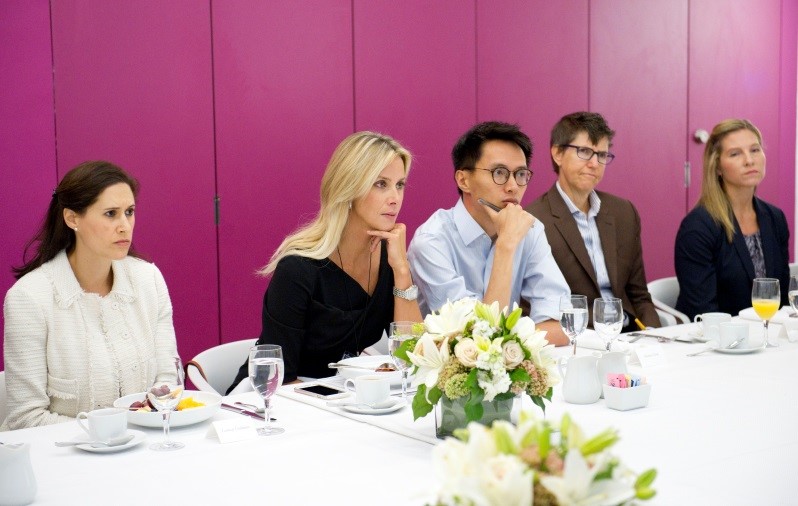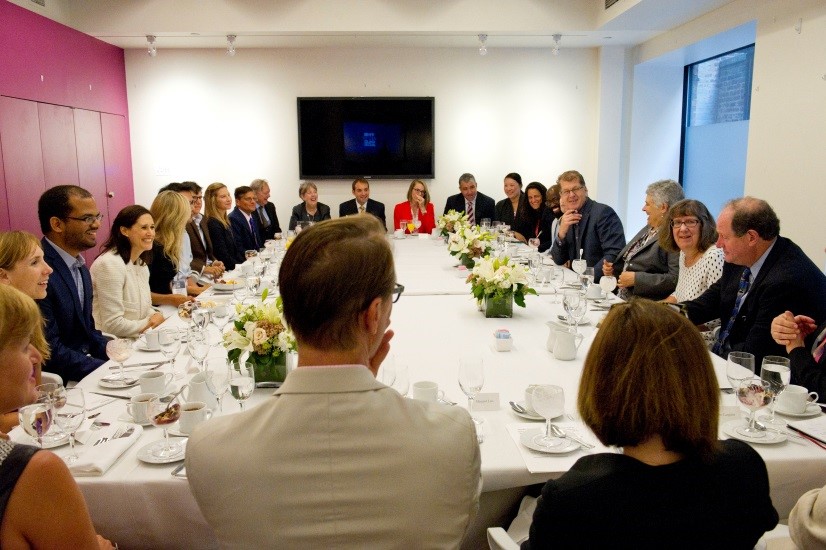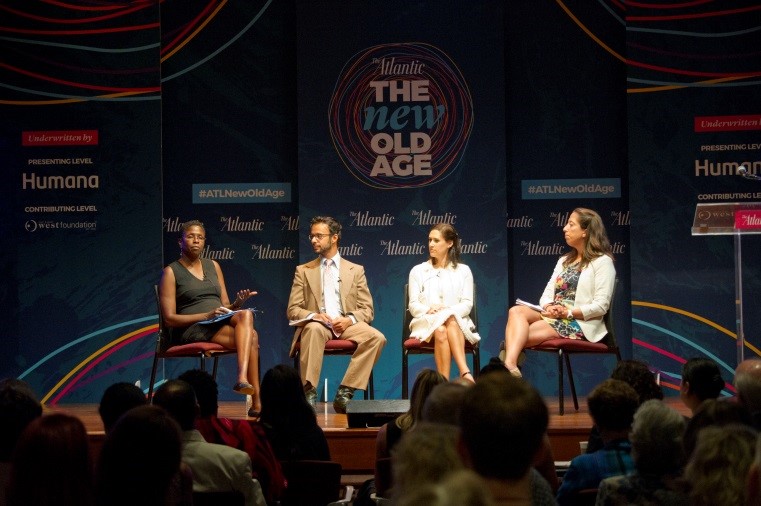The “New Old Age” – Working Together to Build New Models of Care for Seniors
Earlier this month, West Health and The Atlantic magazine brought together a diverse group of leaders dedicated to coming up with new solutions that address the existing and emerging challenges of aging in America.
The discussion focused on how to build models of care that enable seniors to successfully age in place with access to high-quality, affordable health and support services that preserve and protect their dignity, quality of life and independence.
 We discussed the need for coordinated, patient-centered and holistic approaches that address both medical and non-medical factors and that take into account the difficult socioeconomic environment many of our seniors find themselves in. Many more, while above the official poverty rate, still face dire economic circumstances that often force them to choose between food and medicine or make other difficult choices.
We discussed the need for coordinated, patient-centered and holistic approaches that address both medical and non-medical factors and that take into account the difficult socioeconomic environment many of our seniors find themselves in. Many more, while above the official poverty rate, still face dire economic circumstances that often force them to choose between food and medicine or make other difficult choices.
 In an effort to help show the true level of poverty in our nation, and raise awareness of the plight of these low-income seniors, West Health has created an interactive graph on westhealth.org that can be shared on social channels to help shine a light on these individuals who do not deserve to be ignored.
In an effort to help show the true level of poverty in our nation, and raise awareness of the plight of these low-income seniors, West Health has created an interactive graph on westhealth.org that can be shared on social channels to help shine a light on these individuals who do not deserve to be ignored.
The roundtable conversation was a great segue into The Atlantic’s “New Old Age” summit, which attracted more than 250 people to examine the shape of the new old age and its impact on society. What will the new patterns of our life span look like? How will our youth-centered culture reflect new societal realities? How will retirement and work shift as Americans live longer? What role will technology and design play in facilitating the new opportunities and mitigating the challenges of the new old age?
 Throughout the morning, panels of leading experts in the field explored whether aging in one’s home can be improved through design; how we can better integrate older adults into the workforce; the relatively slow adoption of geriatric-specific care in today’s healthcare system; why are seniors fundamentally underrepresented in Hollywood; and other engaging topics. The interactive, standing-room only event garnered over 4.1M social impressions, reaching more than 398K social media accounts, and more than 400 people participated in the event via live stream.
Throughout the morning, panels of leading experts in the field explored whether aging in one’s home can be improved through design; how we can better integrate older adults into the workforce; the relatively slow adoption of geriatric-specific care in today’s healthcare system; why are seniors fundamentally underrepresented in Hollywood; and other engaging topics. The interactive, standing-room only event garnered over 4.1M social impressions, reaching more than 398K social media accounts, and more than 400 people participated in the event via live stream.
Bottom line: We need to think differently about the relationship between seniors and the healthcare systems and the communities in which they live. We need to ask what matters most to seniors and their families how we can support those needs with sustainable care models that are aligned with best clinical practices, social support and payment policies.
